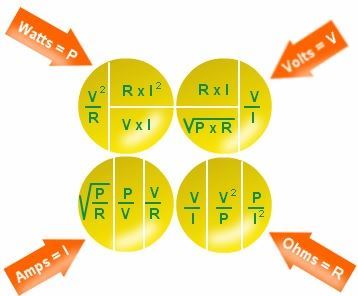
If we drop the rock, the force of gravity increases the rock’s kinetic energy as the rock moves downward until it hits the ground.

If we apply force to lift a rock off the ground, we increase the rock’s potential energy, PE. Let’s examine how doing work on an object changes the object’s energy. A roller coaster car at the top of a hill has gravitational potential energy. Gravitational potential energy is the stored energy an object has as a result of its position above Earth’s surface (or another object in space).

1 W = 1 J/s There is much potential for confusion between the value for Work (measured in joules but often written in formulas as W) and Power (measured in watts and often written in formulas as W). Formula 2 - Mechanical (mechanic) power equation: Power P = E ⁄ t = W where power P is in watts, energy E is in joules, and time t is in seconds. If there is AC, look also at the power factor PF = cos φ and φ = power factor angle (phase angle) between voltage and amperage. The big power formulas are: Formula 1 - Electrical (electric) power equation: Power P = I × V = R × I2 = V2 ⁄ R where power P is in watts, voltage V is in volts and current I is in amperes (DC). For example: Problem: If a construction worker pushes the wheelbarrow, expending 50 J of work in 2s, how much power does he use? Answer: 50 J divided by 2 s is 25 W so, the power is equal to 25 watts,For electrical engineering and electronics, power is calculated as: P = I2R, or P= V2/R, or P= VI where P is power, I is current, R is resistance, and V is voltage. Power (P) is the rate of doing work (W), so its fundamental formula is: P=W/t That is:Power = Work divided by time.Clear explanation: Power is equal to: How much work is done (in joules) divided by the time (in seconds) it took to do that work.


 0 kommentar(er)
0 kommentar(er)
